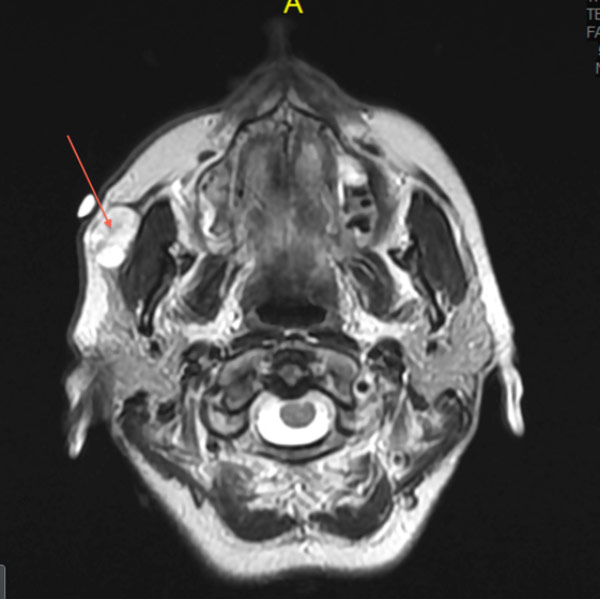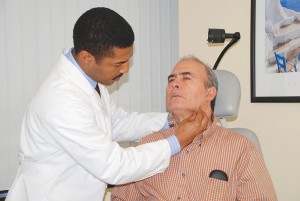- India Medical Mission 2018 - November 1, 2018
- Sleep Disorders: Sleep Apnea and Upper Stimulation Therapy - August 25, 2015
- The Naked Vocalist Podcast Featuring Dr. Reena Gupta - May 27, 2015
- New Therapy for Sleep Apnea – First Sleep Pacemaker placed in California at Osborne Head and Neck Institute. - December 12, 2014
- Boxer’s Ear: Can your ear explode? - December 12, 2014
- Nose Picking (Rhinotillexis) and Septal Perforations: Why I should stop picking my nose…? - November 24, 2014
- Deviated Septum and Septal Perforation - July 28, 2014
- Hereditary Hemorrhagic Telangiectasia: Nasal Septal Perforation Repair - June 25, 2014
- Dr. Mantle recognized at the Beverly Hills Medical Science Academy Awards - May 8, 2014
- Commonly Misdiagnosed Pathologies: Arteriovenous Malformations - April 9, 2014
Is there an alternative to parotidectomy for accessory parotid gland tumor surgery?
Question: I recently made an appointment with my primary care physician because I began to experience swelling of my cheek. After some tests and imaging I was told that I had a mass growing near my parotid gland. My doctor referred me to an ENT who diagnosed me with an accessory parotid gland tumor. I was told that I would need to have surgery to remove the gland through a procedure called a parotidectomy. I am apprehensive about this treatment because I was told that this procedure carried several risks and potential complications. Is there an alternative to parotidectomy for accessory parotid gland tumor treatment?
Discussion:
Intraoral accessory gland resection is a safer alternative procedure for accessory parotid gland tumor treatment than traditional parotidectomy. Classically, accessory parotid gland tumors have been treated utilizing parotidectomy. Traditional parotidectomy is an open and invasive surgical procedure that carries several risks and potential complications. To access the accessory parotid gland, surgeons must dissect through the superficial layers of the cheek before reaching the tumor. There are, however, several critical structures such as the facial nerves that overlie these glands. The facial nerves are exceedingly delicate and provide innervation to the muscles of the face. Inadvertent surgical trauma all too often can result in facial paralysis and disfigurement. A surgeon must be able to meticulously dissect this nerve and remove the tumor without causing neural damage. This external approach through the face can also potentially result in unwanted cosmetic changes such as scars and depressions.

Intraoral accessory gland resection was developed as a cutting edge minimally invasive technique for accessory gland tumor treatment. The accessory gland tumor is removed through a small incision made to the inside of the mouth rather than externally through the face. The facial nerves and other delicate structures remain undisturbed, protecting the patient from developing facial paralysis and disfigurement. Due to the minimally invasive nature of this procedure, there are no visible external scars and no visible facial defect. The combination of these factors also results in greatly decreased recovery time, increasing the patient’s quality of life. It is highly recommended that you consult a qualified head and neck surgeon for all cases of accessory parotid gland tumors before deciding on a treatment option.

Dr. Ryan Osborne, director of the Division of Head and Neck Surgery at the Osborne Head and Neck Institute regularly performs intraoral accessory parotid gland resections. Dr. Osborne has developed his own cutting edge techniques for removal of accessory parotid tumors and has received international acclaim for his superior outcomes and innovative approach. Dr. Osborne focuses on providing the highest level of care through modern and minimally invasive procedures.
Key Facts:
- Intraoral accessory gland resection is a safer alternative procedure for accessory parotid gland tumor treatment compared to traditional parotidectomy.
- Traditional parotidectomy is an open and invasive surgical procedure that carries several risks and potential complications such as facial paralysis, disfigurement, and taste disturbance.
- Intraoral accessory gland resection was developed as a cutting edge minimally invasive technique for accessory gland tumor treatment.
- When approached from inside the mouth, the facial nerves remain outside the surgical area and undisturbed, protecting the patient from developing facial paralysis and disfigurement.
- There are no external or visible scars associated with intraoral removal of accessory parotid tumors.
- Because the intraoral approach of accessory parotid gland resection is minimally invasive in nature, recovery time is greatly decreased.
- Dr. Ryan Osborne, director of the Division of Head and Neck Surgery at the Osborne Head and Neck Institute regularly performs intraoral accessory parotid gland resections.
To learn more about accessory parotid gland tumor treatment please contact the Osborne Head and Neck Institute.



